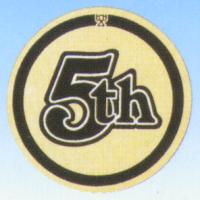Our troops rock! Thank you for serving!
|
Posted on 04/29/2007 5:04:35 PM PDT by StarCMC
The Protocols to the Protocol I is an amendment to the Geneva Conventions. Adopted on June 8, 1977 by the Diplomatic Conference on the Reaffirmation and Development of International Humanitarian Law applicable in Armed Conflicts presided over by Pierre Graber of Switzerland. The protocol entered into force on December 7, 1979 (six months after its adoption by the conference) and is binding for a country six months after it has ratified it. As of 14 January 2007 it had been ratified by 167 countries, with the United States, Israel, Iran, Pakistan and Afghanistan and Iraq being notable exceptions. However, the United States, Iran and Pakistan signed it on 12 December 1977 with the intention of ratifying it. The international community outside of the U.S., generally accepts that the additional Geneva Conventions protocols are obligatory on all parties worldwide, as they have become part of customary law. The U.S. main objection is that the protocol extends Geneva Conventions protection to those it regards being "unlawful combatants" (see Part III Article 44). Protocol II: Additional to the Geneva Conventions of 12 August 1949, and Relating to the Protection of Victims of Non-International Armed Conflicts. As of 14 January 2007 it had been ratified by 163 countries, with the United States, Israel, Iran, Pakistan and Afghanistan and Iraq being notable exceptions. However, the United States, Iran and Pakistan signed it on 12 December 1977 with the intention of ratifying it. The international community outside of the U.S. generally accepts that the additional Geneva Conventions protocols are obligatory on all parties worldwide, as they have become part of customary law. President Regan's speech to the Senate regarding Protocols I & II. As of 14 January 2007 it had been ratified by nine countries and signed but not yet ratified by an additional 75 countries. It entered into force on 14 January 2007, six months after the second ratification. The primary purpose of adopting the third protocol was to enable Magen David Adom ("MDA"), Israel's emergency relief service, to become a fully recognized and participating member of the International Red Cross and Red Crescent Movement. For many years, the MDA (Red Shield of David), Israel's version of the Red Cross, used a red Magen David (Star of David) as its only symbol. During that period, the MDA was excluded from full membership in the International Federation of the Red Cross and Red Crescent because of the refusal of a number of member states to allow its participation. Under Protocol III, the MDA will continue to employ the red Magen David for domestic use, and will employ the red crystal on international relief missions. Before the Third Protocol was ratified, a deal was struck between the MDA and the Palestinian Red Crescent (neither of which was a fully-participating member of the IFRC at the time) to ensure that the two groups could mutually agree upon the new symbol and recognize it as official. The adoption of the Red Crystal will allow member societies operating in areas of religious and ethnic conflict to use a religion-neutral symbol, as contrasted to the Cross and Crescent, which hold Christian and Islamic connotations, respectively. In addition to Israel, Eritrea has indicated that it may use the new emblem. The term unlawful combatant (also unlawful enemy combatant or unprivileged combatant/belligerent) denotes people denied the privileges of prisoner of war (POW) designation, in accordance with the Geneva Conventions; those to whom protection is recognised as due are lawful or privileged combatants.[1] Once a combatant is found by a competent tribunal to be an unlawful combatant, he or she no longer has the rights and privileges accorded to POW, but he or she retains all the rights any other civilian would have under municipal and international law in the same situation.[2] Where there is doubt about whether fulfill the conditions that confer prisoner of war status Article 5 of the GCIII states that their status may be determined by a "competent tribunal" and until such time they are to be treated as prisoners of war.[3] After such "competent tribunals" have determined their status, the "Detaining Power" may choose to accord detained unlawful combatants the rights of prisoners of war as described in the Third Geneva Convention, but is not required to do so. Unlawful combatants who are not nationals of a neutral State, and are not nationals of a co-belligerent State, do retain rights and privileges under the Fourth Geneva Convention so that they must be "treated with humanity and, in case of trial, shall not be deprived of the rights of fair and regular trial".[4] The phrase "unlawful combatant" does not appear in the Third Geneva Convention (GCIII).[1] However, Article 4 of GCIII does describe categories of persons who are entitled to prisoner of war status and there are other international treaties which deny lawful combat status for mercenaries and children. In the United States, the Military Commissions Act codified the legal definition of this term, and invested the U.S. President with broad discretion to determine whether a person may be designated an unlawful enemy combatant. However the assumption that such a category as unlawful combatant exists contradicts the findings by the International Criminal Tribunal for the Former Yugoslavia in the Celebici Judgment. The judgement quoted the 1958 ICRC commentary on the Fourth Geneva Convention, that every person in enemy hands must either be a prisoner of war and, as such, covered by the Third Convention, or a civilian covered by the Fourth Convention, and that "There is no intermediate status; nobody in enemy hands can be outside the law" (The comment was written before the more recent treaty provisions on mercenaries and children had been drafted).[5] The Geneva Convention relative to the Treatment of Prisoners of War, 12 August 1949 (GCIII) of 1949 defines the requirements for a captive to be eligible for treatment as a prisoner of war (POW). A lawful combatant is a person who commits belligerent acts but if captured, would be a considered POW. An unlawful combatant is someone who commits belligerent acts, but does not qualify under GCIII Articles 4 and 5. These terms thus divide people in a war zone into two classes. Those in armies and militias and the like (lawful combatants), and then those who are not. Those in armies and militias and the like have the right to be treated as prisoners of war upon capture and those not in armies and militias do not have the right to be treated as prisoners of war upon capture. The critical distinction is that a "lawful combatant" (defined above) cannot be held personally responsible for acts prosecuting that combat, unless they commit war crimes or crimes against humanity. And if captured, they have to be treated as prisoners of war - basically they can be detained (more humane than killing them), but must be provided for, treated with respect, and so on. If there is any doubt about whether an alleged combatant is a "lawful combatant" then they must be held as a Prisoner of War until their status has been determined by "a competent tribunal". If that tribunal rules that the combatant is an "unlawful combatant" then their status changes to that of a civilian which may give them some rights under Fourth Geneva Convention.[10] Much more at this link. Links Full Text of the Geneva Conventions Army Study Guide on the Geneva Conventions Who Created The Geneva Conventions? Who has signed the Geneva Conventions? Reference Guide for the Geneva Conventions
Next week:
Our troops rock! Thank you for serving!
Geneva Conventions
and
Unlawful Enemy Combatants
Protocol I
Protocol II
Protocol III
 Protocol III is an amendment to the Geneva Conventions relating to the Adoption of an Additional Distinctive Emblem. The third protocol was adopted on 8 December 2005 and authorizes the use of a new emblem, shown right, known as the third protocol emblem or the Red Crystal, for use by national societies.
Protocol III is an amendment to the Geneva Conventions relating to the Adoption of an Additional Distinctive Emblem. The third protocol was adopted on 8 December 2005 and authorizes the use of a new emblem, shown right, known as the third protocol emblem or the Red Crystal, for use by national societies.
Unlawful Enemy Combatants


Beachy will be taking over posting the Canteen Threads
on Mondays for the Month of May!
I'll be around though!
I think the whole world is.
Tee hee..
Running a fever.
Fever means you call in tomorrow.
You need to get to bed, Sis! Sounds like you’ve caught something and have fever.
I know I am NOT the Sis who knows all this stuff, but now I AM worried about you! (((hugs)))
Um...
No fever right now..
Ate at a restaurant this afternoon..
Just shivering and nausea
Ms.B

Me too. The electricity keeps going off and it’s not even lightening anywhere close. I was typing in the dark a bit ago.....using the air card. Thank goodness for it!

 h
h
 !!
!!Taz.....#50!!
Grammie.....#100!!
TS.....#150!!
Good evening, Sand....did you have a restful weekend?
Oh, Oh,
Food poisoning?
Stay safe.
Comfortable, well,... to me at least it is. Anything below 75 and I’m cold.
QwiK-Draw MacGraw tonight.
Gods, I hope not..
Feel like I have a belly full of snakes..
Bleah
Ms.B

You must love warm weather.
Good evening, ms b.....how’s your mud? Hope you got some rest amongst all the other stuff you probably did today. ((HUGS))
I’m so sorry.
Disclaimer: Opinions posted on Free Republic are those of the individual posters and do not necessarily represent the opinion of Free Republic or its management. All materials posted herein are protected by copyright law and the exemption for fair use of copyrighted works.